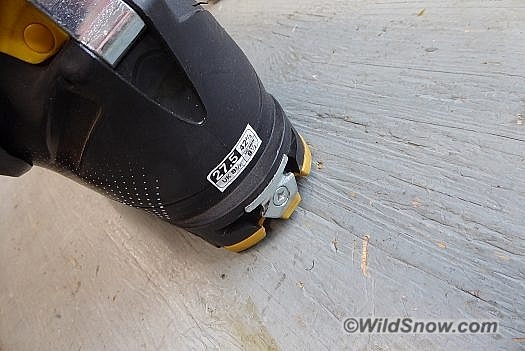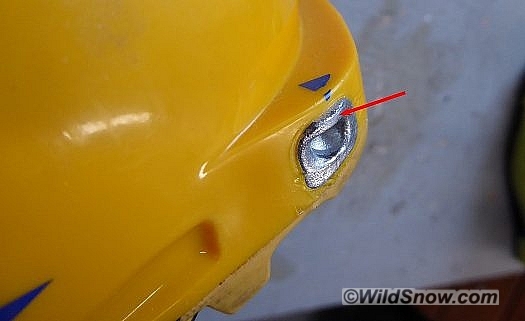Readers asked me to detail the La Sportiva tech fittings. Here you go.
La Sportiva started their ski touring boot line around 2012 (has it been that long?). They’ve experimented with tech fittings since the fine day their first pair of ski touring shoes exited the injection mold. You could argue their S3 and S4 inserts, combined with the Trab TR2 binding, are the “Tech 2.0” that I ballyhoo more than is appropriate. Whatever the case, Sportiva tech fittings are not well documented. Perhaps the following will help.
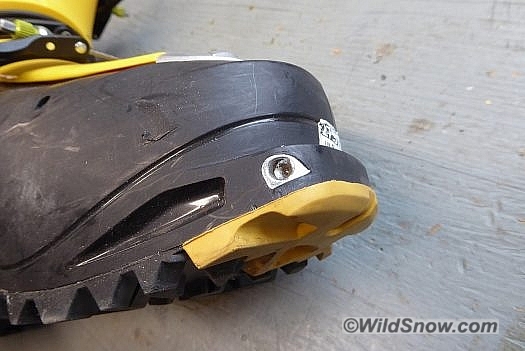
Sportiva attempted to use an aftermarket copy of Dynafit fittings for their first effort, circa 2012. These were the same fittings used by Garmont. During my testing the fittings had uneven performance. Some were fine, others did not release as smoothly as I like. Sportiva reportedly attempted to obtain fittings from Dynafit, but at the time Scarpa was the only licensee. These factors led to the Sportiva S3 fittings, covered below. For want of a better moniker, let’s call these originals the “S1” fitting, but they were really just an attempt to imitate the Dynafit OEM fittings. (The term OEM, as used here at WildSnow.com, means “Original Equipment Manufacturer”).
S2? We don’t know what happened. But they jumped to S3…
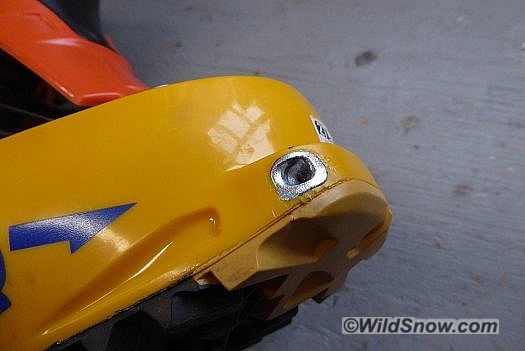
On first glance, S3 toe appears similar to S1. But it’s deeper, with a different shape. It’s designed to function optimally with the Trab TR2 binding, and also works with normal tech bindings. In testing, we found it might yield about half an RV value lower in lateral release, so test and adjust your bindings accordingly.
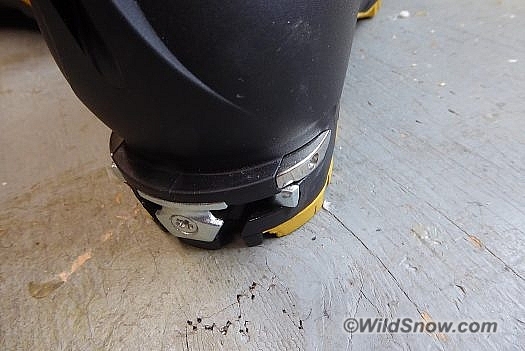
S3 and S4 heels are the same. They match a classic tech binding heel fitting, with the addition of metal fittings for the Trab TR2 heel. The small shiny metal fittings at the top of the stack, with screws, are there for bindings such as Marker Kingpin or others that need a “DIN shelf,” remove them if you’re using a TRAB TR2 binding.
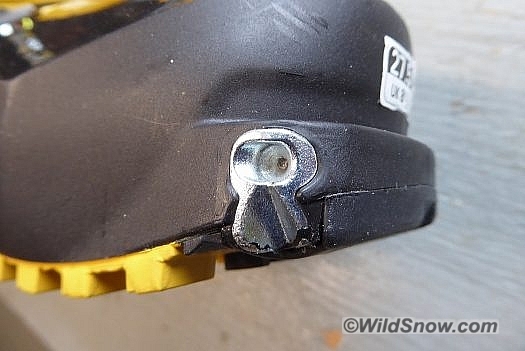
Sportiva S4 toe fitting is where they get radical. Big thing is the obvious lead-in notch, but overall continuing the trend to difference.
What will S5 bring? Tech 2.4? Stay tuned.
WildSnow.com publisher emeritus and founder Lou (Louis Dawson) has a 50+ years career in climbing, backcountry skiing and ski mountaineering. He was the first person in history to ski down all 54 Colorado 14,000-foot peaks, has authored numerous books about about backcountry skiing, and has skied from the summit of Denali in Alaska, North America’s highest mountain.

